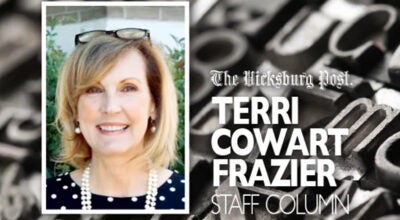Let’s remember it doesn’t have to be a death sentence
Published 6:23 pm Wednesday, October 3, 2018
It’s October. And since 1985, October has been designated as National Breast Cancer Awareness Month.
Initially, the aim of NBCAM was to promote mammography as the most effective weapon in the fight against breast cancer. A partnership between the American Cancer Society and the pharmaceutical division of then-Imperial Chemical Industries was responsible for the October designation.
All these years later, Breast Cancer Awareness Month is an annual international health campaign organized by major breast cancer charities every October to increase awareness of the disease and to raise funds for research into its cause, prevention and discovery of a possible future cure.
The color pink and its association with breast cancer has its own history.
In 1993 Evelyn Lauder, of the Estée Lauder Companies, founded The Breast Cancer Research Foundation and established the pink ribbon as its symbol, though this was not the first time the ribbon was used to symbolize breast cancer.
Even earlier, Charlotte Haley, a 68-year-old California woman whose sister, daughter and granddaughter had breast cancer, distributed peach-color ribbons to call attention to what she perceived as inadequate funding for research.
And in the fall of 1991, the Susan G. Komen Foundation handed out pink ribbons to participants in its New York City race for breast cancer survivors.
Breast cancer continues to be the most commonly diagnosed cancer among women, and the second leading cause of death among women. One in eight women will be diagnosed with breast cancer in her lifetime.
And men are not free of the fear of a breast cancer diagnosis either. The incidence is much rarer in men, but an estimated one in 1,000 men will be diagnosed with breast cancer in his lifetime.
The good news is breast cancer does not have to be a death sentence. Early detection is crucial and can be successful only if women — and men — are well educated and ever vigilant in practices like mammograms, clinical breast exams and breast self-exams, which remain some of the most important ways to catch breast cancer early and increase survival rates.
—The Northeast Mississippi Daily Journal



